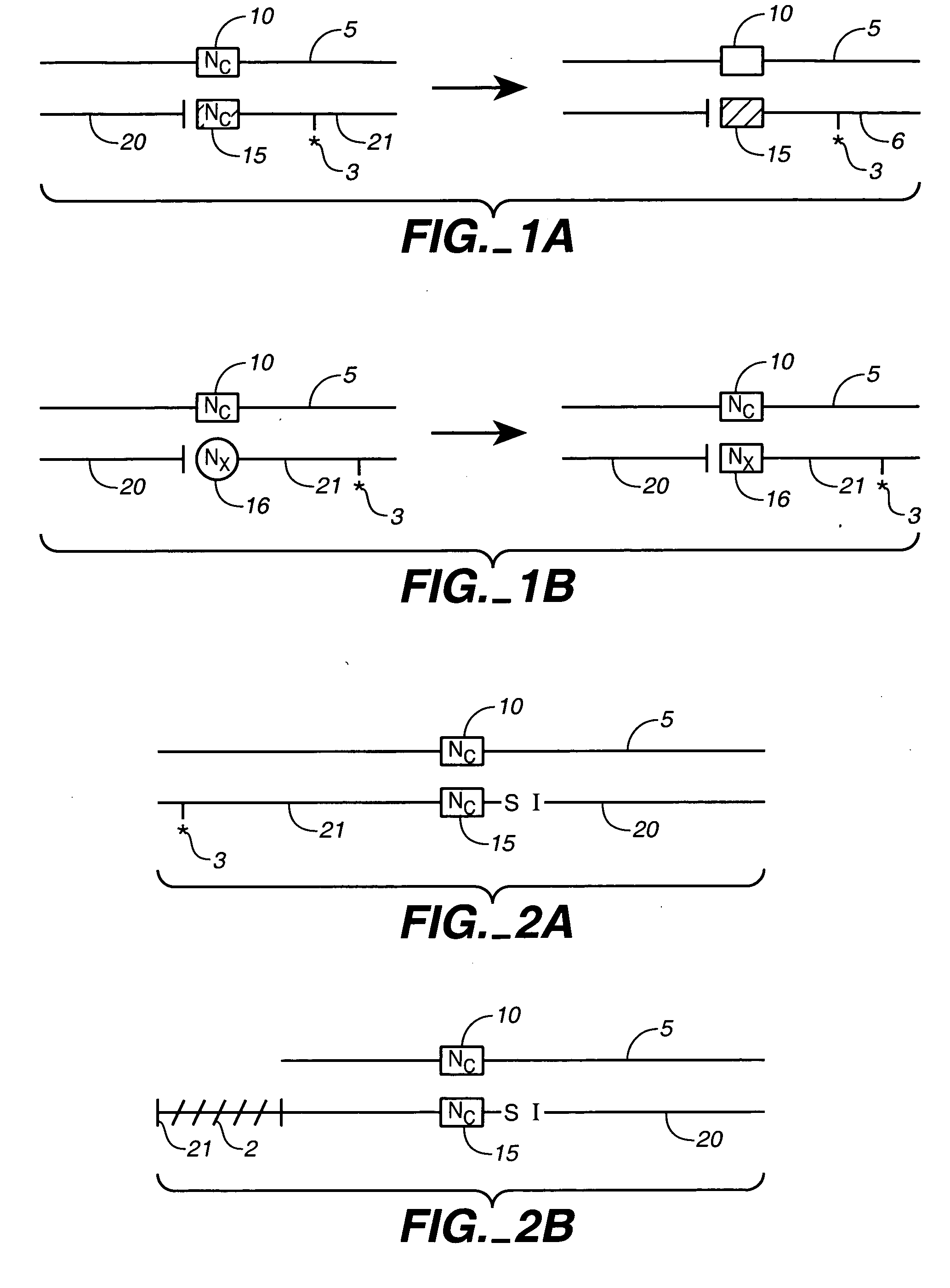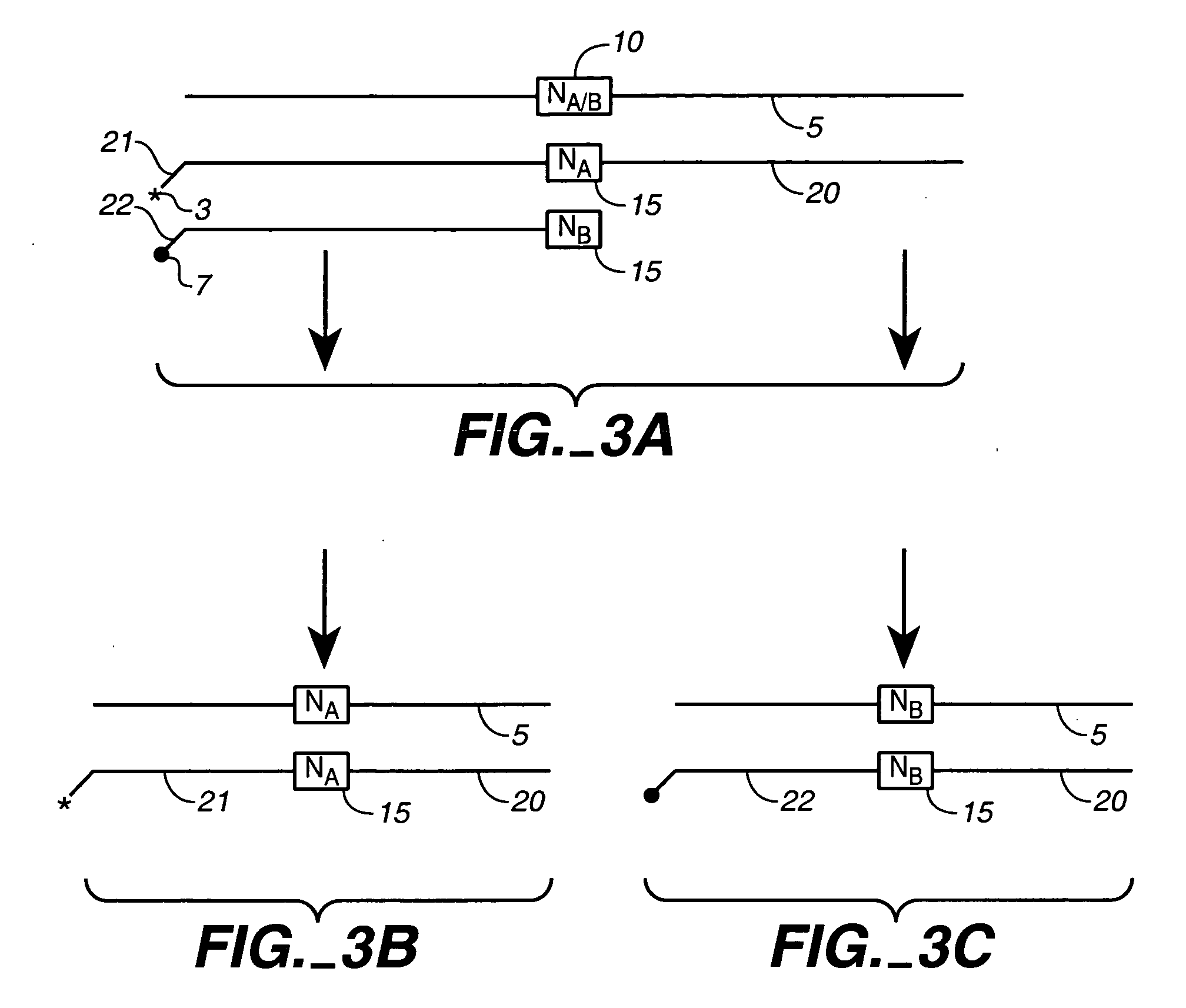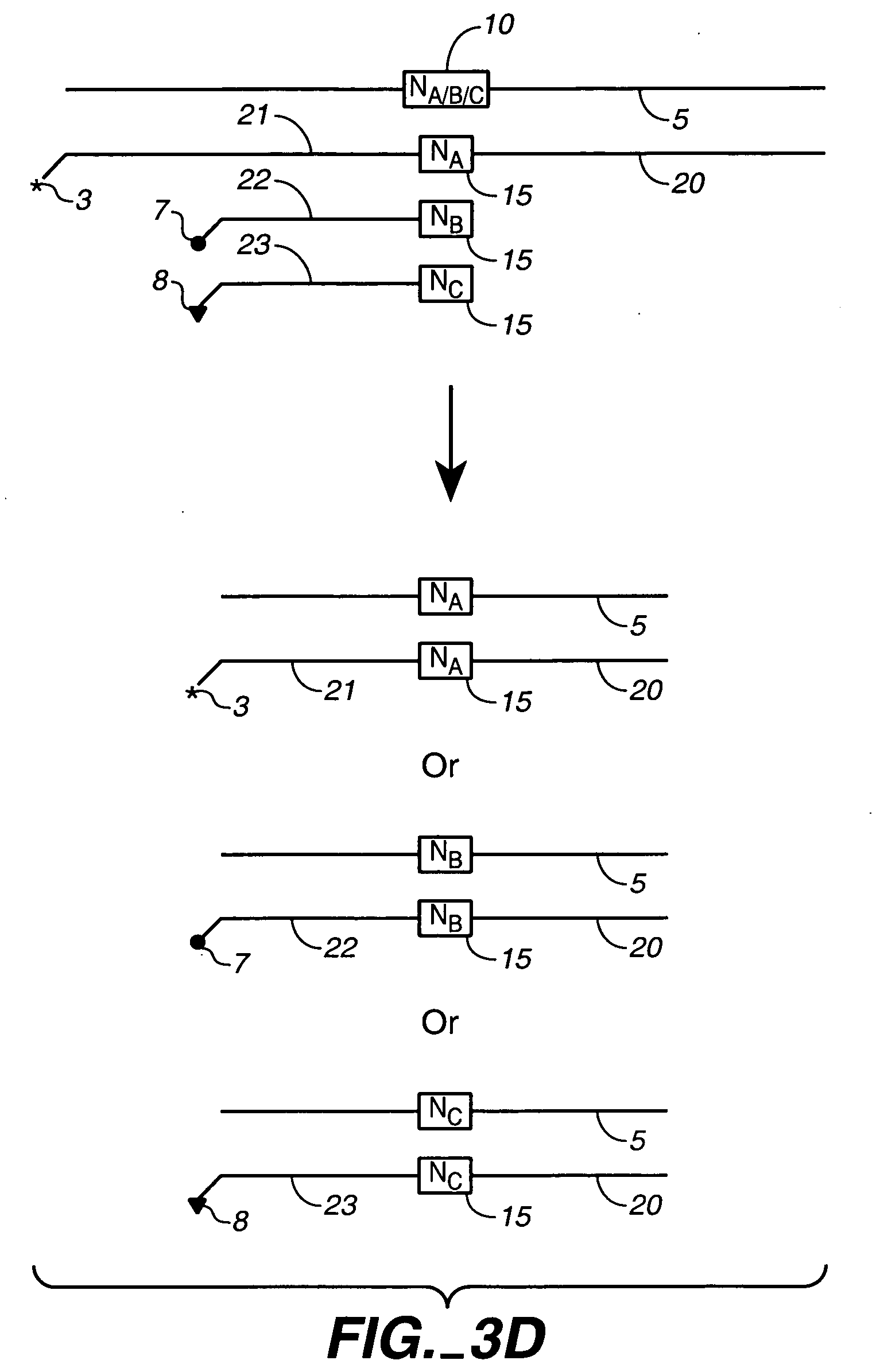Chemical ligation of nucleic acids
a nucleic acid and chemical ligation technology, applied in the field of nucleic acid analysis, can solve problems such as general use difficulties
- Summary
- Abstract
- Description
- Claims
- Application Information
AI Technical Summary
Problems solved by technology
Method used
Image
Examples
example 1
Non-Enzymatic Ligation
[0139] The efficiency of chemical ligation using phosphate-amine chemical ligation chemistry was analyzed. The ligation assay consisted of: 1) target DNA with two matched probes; and, 2) target DNA with one mismatch.
[0140] As shown in FIG. 9, the reaction involves a two step process by which 1-ethyl-3-(3-dimethylaminopropyl) carbodiimide (EDC) first binds to a ligation probe labeled with a 3′-phosphate, followed by nucleophillic attack on a 5′-amino group present on a second ligation probe, to form a phosphoramidate bond. The 5′-amino ligation probe was made using Glen Resarch's 5′-amino-dT phosphoramidite. The ligation probe comprising the 3′-phosphate was made using H8 (see FIG. 10).
[0141] HPLC analysis was used to detect the peak eluting at 20.3 minutes that corresponded to the ligated strand. In the presence of a complementary target strand, greater than 90% ligation efficiency was observed in approximately 4 hours at 16° C. (FIG. 11A). Greater that 48% ...
PUM
| Property | Measurement | Unit |
|---|---|---|
| Tm | aaaaa | aaaaa |
| temperatures | aaaaa | aaaaa |
| temperatures | aaaaa | aaaaa |
Abstract
Description
Claims
Application Information
 Login to View More
Login to View More - R&D
- Intellectual Property
- Life Sciences
- Materials
- Tech Scout
- Unparalleled Data Quality
- Higher Quality Content
- 60% Fewer Hallucinations
Browse by: Latest US Patents, China's latest patents, Technical Efficacy Thesaurus, Application Domain, Technology Topic, Popular Technical Reports.
© 2025 PatSnap. All rights reserved.Legal|Privacy policy|Modern Slavery Act Transparency Statement|Sitemap|About US| Contact US: help@patsnap.com



